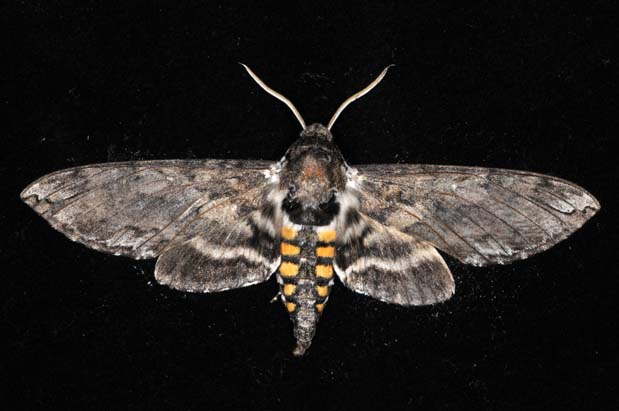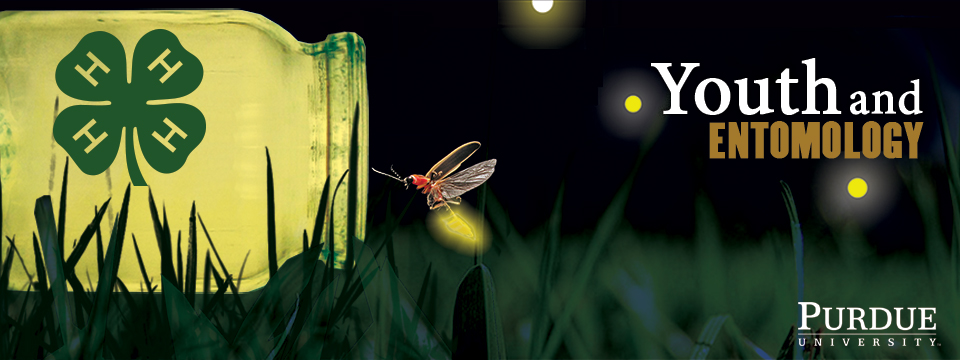

|
|
Hornworm adult
(John Obermeyer, Purdue University) |
|
Common Name: Hornworm - adult
See also: larva Scientific Name: Sphingidae: Manduca sp. Status: pest of certain vegetable plants Damaging Stage: caterpillar Biology: Hornworms are large, robust moths that have long, narrow front wings. Their bodies are spindle-shaped, pointed at both ends. They have gray-and-white mottled wings and abdomens lined along each side with five (tomato hornworm) or six (tobacco hornworm) conspicuous, orange-yellow spots. The distinctive green caterpillars can grow to more than 3 inches in length. A large, thick, pointed structure, or “horn,” protrudes from the upper abdominal end and is responsible for the name “hornworm.” Tobacco hornworms have seven straight, oblique white lines edged with black on the upper borders that run laterally along their abdomen. Tomato hornworms have eight V-shaped marks. Females lay their eggs singly on leaves. Larvae feed for three or four weeks before burrowing into the soil to pupate. The pupae overwinter, and the adults emerge in the spring. There are two generations per year. Injury: Larvae feed on plant leaves and develop through five instars. They feed on foliage, blossoms, and green fruits of tomatoes, tobacco, potatoes, eggplants, and peppers. The fifth instar is responsible for the majority of the defoliation that occurs. Action Threshold: Due to their size, tobacco hornworms can consume large quantities of plant material. However, hornworms are not considered to be serious pests of commercial crops, probably due to the activities of natural enemies. Management: Conserving naturally occurring parasitic wasps provides adequate biological control in most cases. This, together with picking off and destroying caterpillars in tomato and other garden crops, is usually sufficient. Rototilling to destroy the pupae is also helpful. Bt is effective against early instars. Chemical pesticides are also very effective. |
 |
||||||||||||||||
|
|
|||||||||||||||
|
Purdue Extension Entomology, 901 West State Street, West Lafayette, IN 47907 USA, (765) 494-4554 Department of Entomology | College of Agriculture | Extension © Purdue University | An equal access/equal opportunity university | Integrity Statement | Copyright Complaints | Maintained by ENTM IT Trouble with this page? Disability-related accessibility issue? Please contact us at entmwebmaster@purdue.edu so we can help. | ||||||||||||||||
